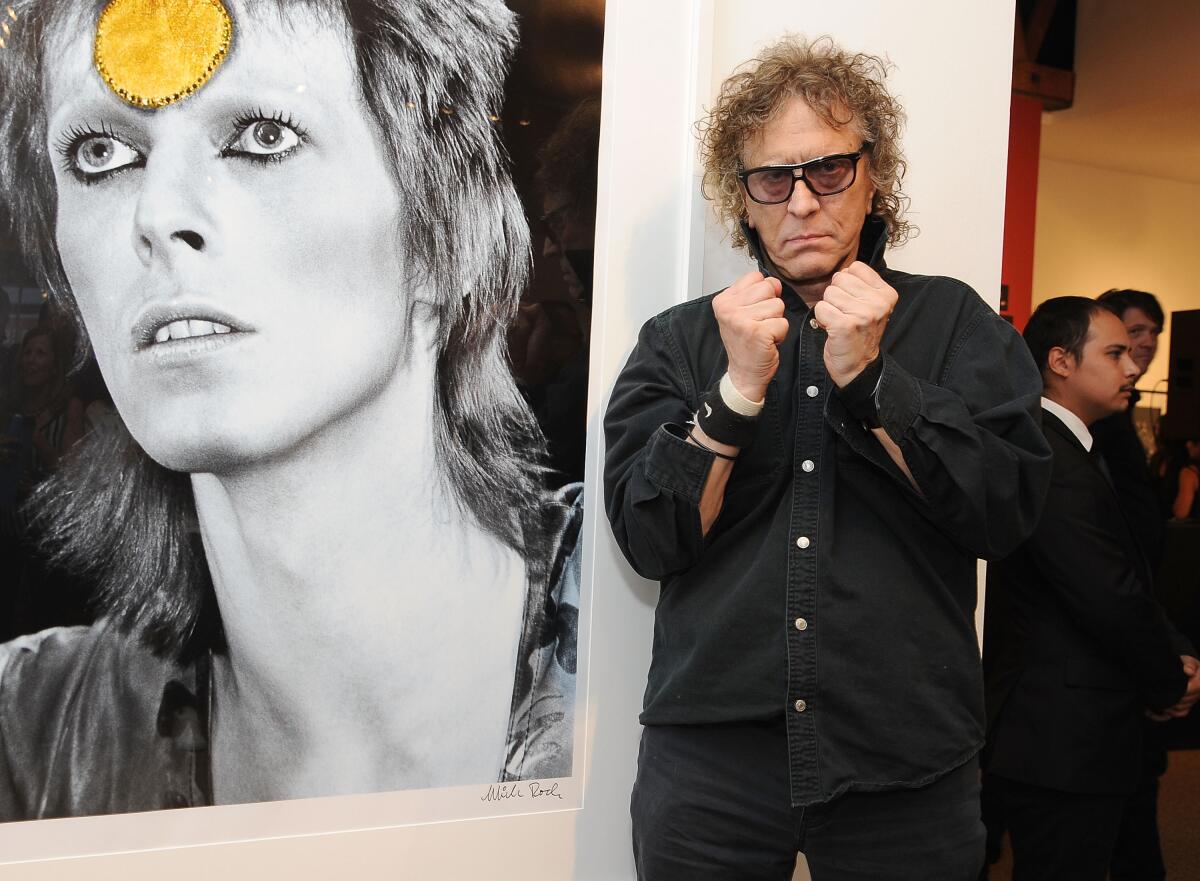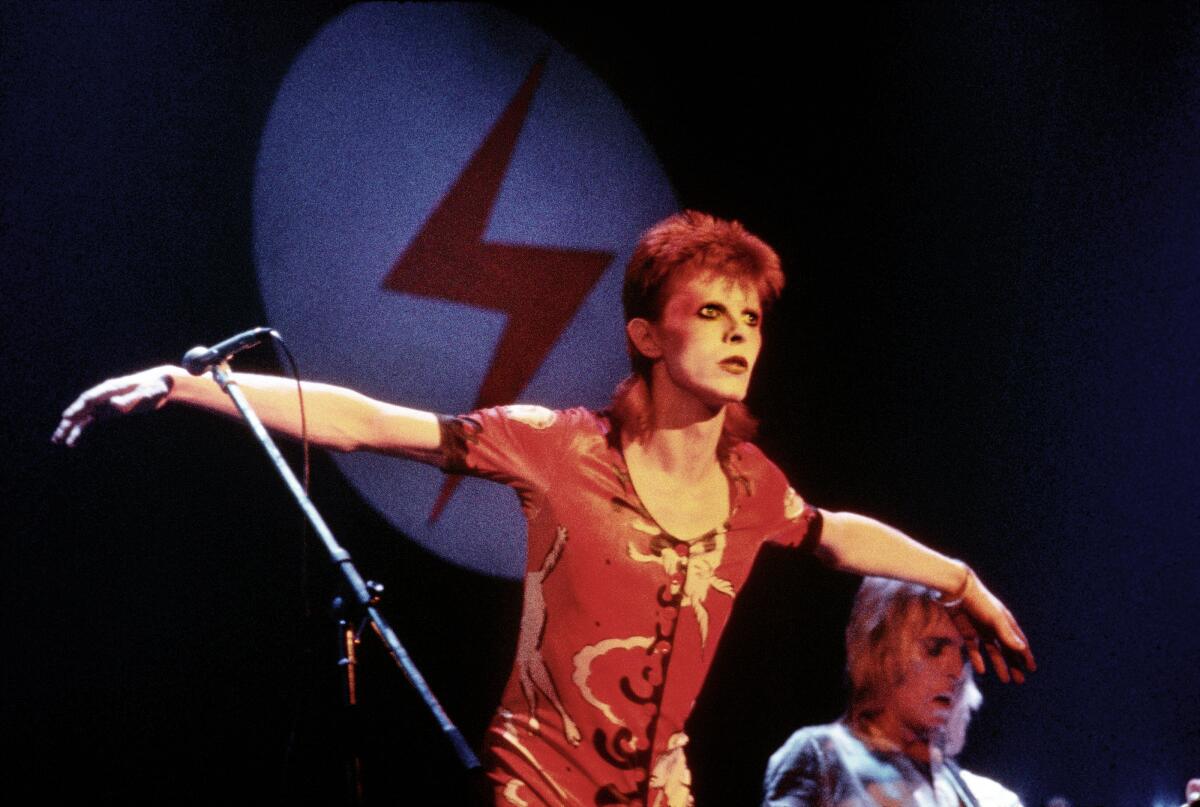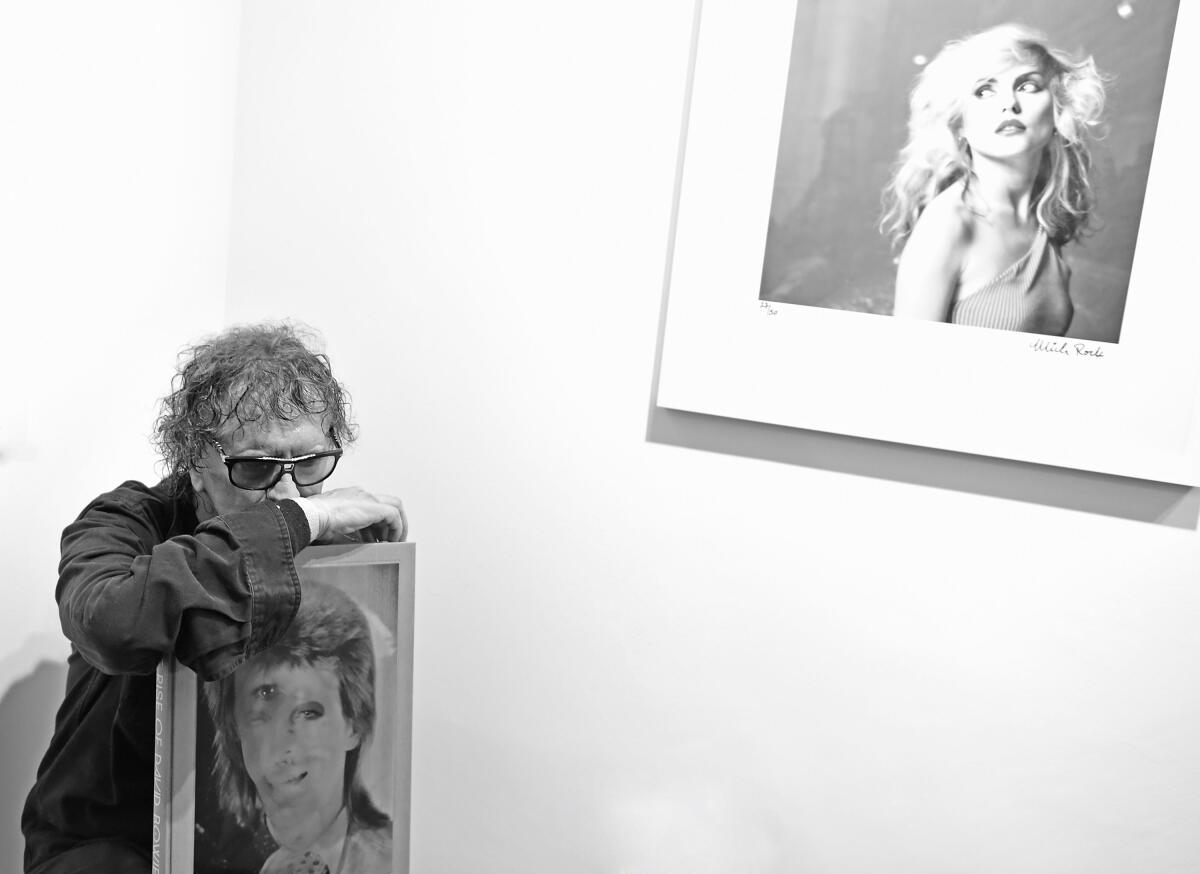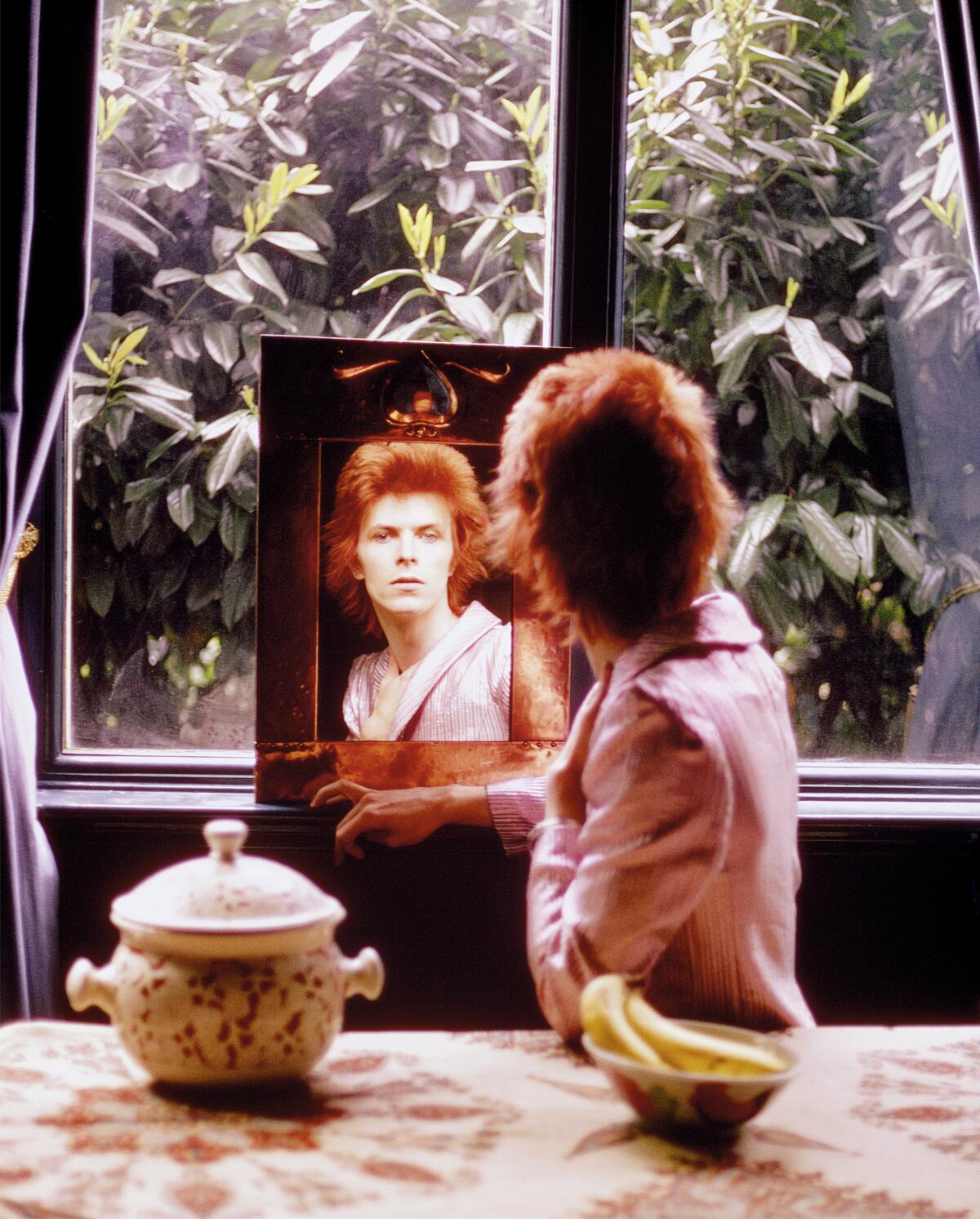David Bowie, Iggy Pop, Queen: Photographer Mick Rock captured stars of glam rock and beyond

- Share via
When he first started doing portraits of rock stars including David Bowie, Blondie, Queen, Lou Reed and Iggy Pop, photographer Mick Rock quickly learned not to get hung up on technique.
“Just get the bloody picture,” he said to writer Barney Hoskyns in a 2014 interview.
Rock, who died Thursday at 72, explained it more eloquently later in his autobiography, “Glam! An Eyewitness Account”: “First you seduce the retina, then you subvert the other senses.”
The legendary photographer’s images of London in the 1970s captured, in vibrant Technicolor hues, the androgynous glam scene of former hippies like him who had “acquired an occasional, deliciously illicit taste for eyeliner, rouge and lipgloss,” as he wrote. “None had the appetite for mascara that I did.”
Rock’s portraits appeared on essential album covers including the Stooges’ “Raw Power,” Joan Jett’s “I Love Rock ‘n’ Roll,” Queen’s “Queen II” the Ramones’ “End of the Century” and “The Madcap Laughs” by Syd Barrett. His eye-popping photos of “Rocky Horror Picture Show” actors Tim Curry, Susan Sarandon and Pat Quinn helped frame the camp-driven, anything-goes exuberance of the period.

“It is with the heaviest of hearts that we share our beloved psychedelic renegade Mick Rock has made the Jungian journey to the other side,” wrote Rock’s estate in an Instagram post announcing his death, the cause of which was not provided. “Those who had the pleasure of existing in his orbit, know that Mick was always so much more than ’The Man Who Shot The 70s.’ He was a photographic poet — a true force of nature who spent his days doing exactly what he loved, always in his own delightfully outrageous way.”
Despite being best known for his images from the glam era, the photographer’s name became so synonymous with rock (literally) that would-be superstars lined up to be given the Rock treatment. In 2008 he shot a tousle-haired Lady Gaga in what he called “the bathtub session” during the run-up to her debut album, “The Fame.” His 2020 image of Miley Cyrus donning studded leather gloves, thick silver necklaces and wearing firetruck red lipstick exudes a matter-of-fact power.
“When people ask me what inspired me, it was really the charisma of a lot of my early subjects. It certainly wasn’t other photographers,” he told Hoskyns.
You could see his gleeful vision in each photo: 1980s-era Madonna in a pompadour, gently touching her tongue to her bare shoulder; Motley Crue circa 1986 in a pink tiled bathtub, wearing sunglasses and soaking in bubbles; a wide-eyed Dolly Parton onstage in ‘75; Lou Reed and Andy Warhol sitting on a plaid couch, the former man-spreading and menacing, the latter looking like travel-weary salesman; Jerry Garcia bathed in red light while playing with the Grateful Dead in 1972; a seated Lana Del Rey in black thigh-high lace-up boots and a feathery black sweater, framed against a yellow backdrop from 2018.

Born Michael Edward Chester Smith on Nov. 22, 1948, in Hammersmith, London, Rock was first educated at the prestigious Emanuel School and then advanced to University of Cambridge’s Gonville & Caius College. While there he became friendly with classmate Barrett, who was playing guitar with Pink Floyd.
“I was just playing around, really. The idea of being a photographer didn’t excite me nearly as much as the idea of being a whacked-out symbolist poet,” Rock told Hoskyns. “If I hadn’t shot Syd Barrett and got so excited about those pictures, my path might have been very different.” With what he described in the same interview as “a battered Pentax camera that I got from a mate for forty quid,” Rock discovered a new creative outlet. Though he’d originally imagined himself a writer, he recalled reveling in “the non-intellectual inner process that the camera was opening up for me.”
Rock started photographing Bowie as the artist was forming his Ziggy Stardust persona: bright red mullet, with blood-red rouge and eye shadow and glittery gold lipstick. One remarkable shot finds Bowie, pants-less save bikini bottoms and wearing women’s platform sandals, singing to a rowdy crowd whose outstretched arms reach for a piece of their hero. Another, during a performance at Oxford Hall in June 1972, sees Bowie bent beneath a straddling Mick Ronson. Nearly on his knees, Bowie’s biting at Ronson’s electric guitar as the crowd looks on in wonder.

That photo soon caused a buzz. “At noon the next day I met David at Oxford Circus. We pinned this shot to the bulletin board. ‘That’ll get them at it,’ he beamed.” It appeared in a full page ad in Melody Maker that week. “I was a marked man after that. The man who shot Ziggy Stardust. ... I didn’t look back for 20 years,” he wrote in “Glam! An Eyewitness Account.”
Through his work with longtime muse Bowie, Rock learned what he called “lessons in the alchemy of image-making and the mystery of its durability,” and in glam rock he found a scene whose philosophy aligned with Rock’s ambition to “build up a collection where the sum of all the parts is more valuable than the single session.”
Learning of his death, longtime friends and portrait subjects paid their respects on social media. Wrote former Bowie keyboardist Mike Garson: “So sad to hear of Mick Rock’s passing. He was one of a kind with such an eye for aesthetics and seizing the right moments. He was also quite fun to travel with back in the days of the Spiders.”
Queen guitarist Brian May noted that the band’s “Queen II” cover picture “gave us an enduring image, inspired part of the ‘look’ of our Bohemian Rhapsody video a couple of years later, and has been widely imitated by others over the years since then.”
Chris Stein of Blondie wrote, “Besides being a great photographer, Mick got access to everyone because he was such a sweetheart charming motherf—.”
That charm converged with an eye for color and expression. “A camera is a wonderful ally. It requires minimal maintenance and provides entry to a world of endless imagery,” he eloquently explained in “Glam!” “Follow the frame, says I. Gnaw on the never-ending present. Believe in everything. Throw out all the rules and caress the tiniest twitch, the loneliest thrill, the blessed image. A life on the metaphysical lam … now that feels good.”
More to Read
The biggest entertainment stories
Get our big stories about Hollywood, film, television, music, arts, culture and more right in your inbox as soon as they publish.
You may occasionally receive promotional content from the Los Angeles Times.











